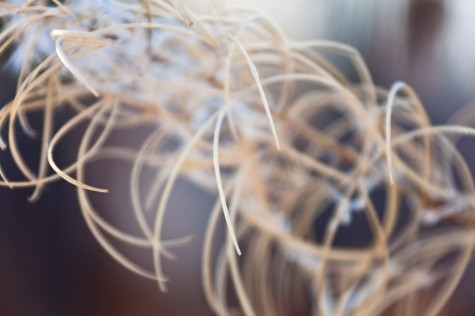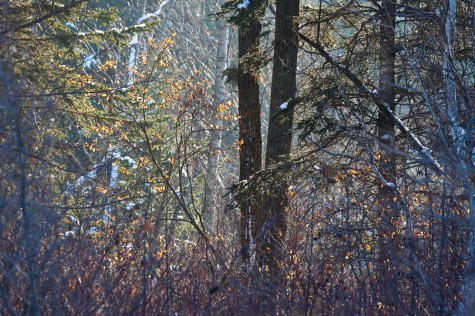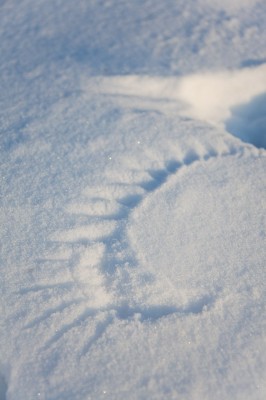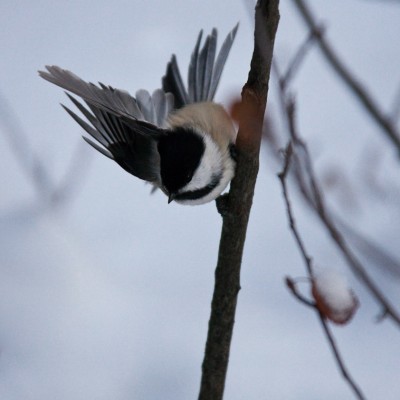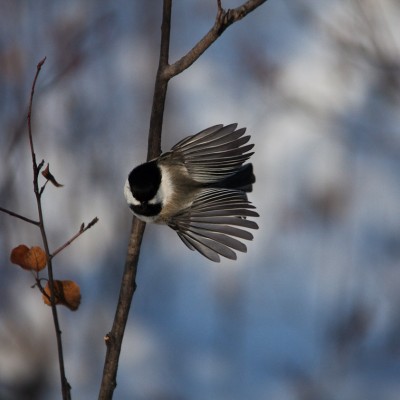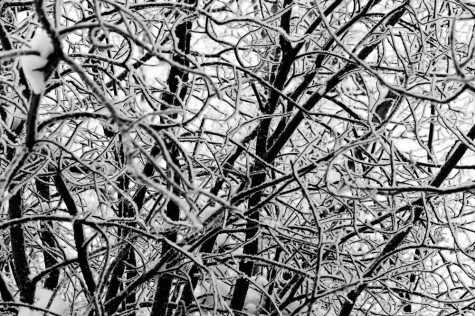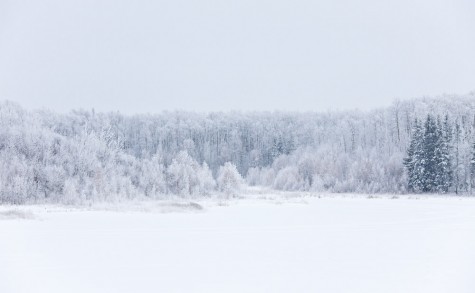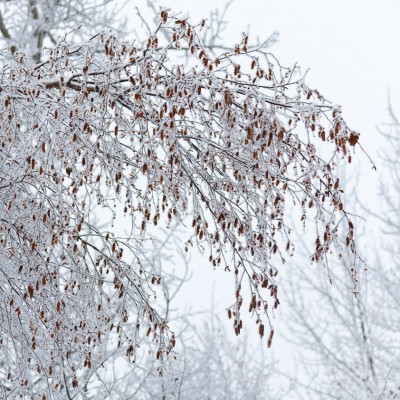I know it’s odd to call this post “Dried fireweed detail” when 95% of the photograph is out of focus. For me however, this image captures the essence of the detail—and the depth—of the dried seed pods. The title’s also a bit if a play on words—using “detail” in the sense of a close-up of a portion of a larger work, like when a small section of a painting is enlarged in a book to show a painter’s technique, for example. I really enjoy getting in close to a photographic subject to look for an angle that can capture the greater “whole” of the subject while showing only a small portion.
|
||
|
I took this photograph during a beautiful lunch-time walk through the Whitemud Ravine. Although it was mid-day, because of the season the light was angled low and filtered through a very light haze, giving it a warm tone. It’s unusual to see warm-toned colours much during the winter, but if you catch it just right they can add an interesting mood to an image. 
After a couple centimeters of fresh, powdery snow, I went for a walk at the Strathcona Science Park along the North Saskatchewan River. In one area there were nearly a dozen spots where a magpie had dropped into the snow, leaving these beautiful impressions of its wing tips and long tail—thrown into beautiful detail by the low angle of the sun these days. I couldn’t tell what it was after under the snow, and I didn’t see any other magpie tracks outside of this one small area. If you have ever seen something similar, I’d love to hear you think this bird might have been up to. 
I have been settling into a new routine, having started a new work contract in the new year, and part of this routine often includes walking through Edmonton’s beautiful Whitemud Ravine during my lunch break. The chickadees in this park have become accustomed to humans, and will come in close to see if you’ve brought them anything. I couldn’t resist taking a couple photos of them, and the ones I liked best were always just before they took off. I set a high enough shutter speed to catch the details of their feathers, and hoped for the best. Whenever I tried to catch one as it took off, I got a picture of a bare branch—I was too slow. By the time I could react, the bird was gone. I had to watch through the viewfinder and wait until I thought the bird was going to jump. Let’s just say it’s a good thing I’m shooting digital… 
Here’s another detail-oriented image taken during our recent spell of grey, overcast winter days. As I mentioned in a previous post, when the light is diffused so evenly by the low, bright stratus clouds that are common over central Alberta in the winter (especially the past few weeks), it’s often these close-up, detail oriented compositions that I find work best. I don’t commonly convert images to black and white, and even less often do I process them quite as heavily as I have here. While the contrast was fairly strong to begin with, I’ve “crushed” the darks all the way down, and bumped the background sky all the way up, to really emphasize the somewhat abstract pattern of the tangled branches, accentuated by the lining of snow and frost. Perhaps I’ll also post the original version as well, and I would love to hear your comments as to which you prefer. 
To continue the line of thought from my last entry, another type of composition that I find can work on grey, overcast winter days when the light is perfectly flat and even is a “high-key” image like this one. If there’s fresh snow, the whole landscape can turn the same colour–light grey. I find the trick is to ensure that my exposure is bumped up a little bit to turn the greys to white, and to find a little bit of contrast (spruce are great for this) for visual interest. These very subtle, almost monotone, images really capture the feeling of these most-subtle of winter days. 
In central Alberta the cold snap is over, and a prolonged case of the “winter-stratus” has set in—stratus clouds, that is. These are low, featureless clouds and in winter, when there isn’t much moisture, they are generally light grey to nearly white. Sometimes, like yesterday afternoon, they’ll lift a little to where you might call them altostratus, and you’re more likely to catch a little break for the sun to peak through. These are probably the most common clouds (stratus and altostratus) over Edmonton during the winter when there’s not enough solar energy to build a decent cumulus cloud. (I think I may be letting the cloud-watcher nerd in me show a little here). Photographically speaking, stratus clouds make the light perfectly flat and even, which can be both a curse and a blessing. Generally, the contrast of side light and shadows makes for more dramatic images than the flat light under a stratus ceiling, but I find that sometimes detail-oriented compositions benefit from the “huge softbox in the sky” effect. I enjoy the challenge of finding these photographs on days that would normally be considered photographic busts. 
|
||
|
Copyright © 2009-2025 Jonathan Martin-DeMoor |
||

